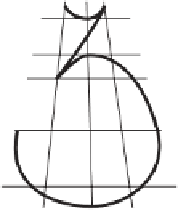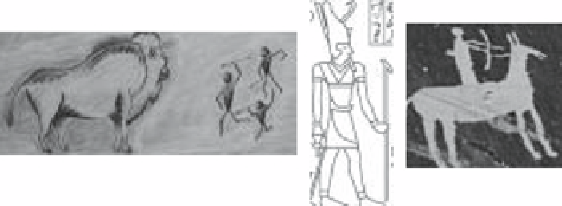Graphics Programs Reference
In-Depth Information
3
Perspective Projection
The term
perspective
refers to several techniques that create the illusion of depth (three
dimensions) on a two-dimensional surface.
Linear perspective
is one of these methods.
It can be defined as a method for correctly placing objects in a painting or a drawing
so they appear closer to the observer or farther away from him. The keyword in this
definition is
correctly
. It implies that a flat picture in linear perspective creates in the
viewer's brain the same sensation as the original three-dimensional scene. The main
tool employed by linear perspective is vanishing points.
This chapter starts by explaining vanishing points. This is followed, in Section 3.2,
by a short history of perspective in art. The remainder of the chapter develops simple
mathematical tools to compute the two-dimensional perspective projection of any given
three-dimensional point.
Figure 3.1: Ancient Art.
The Bible is eternal and is always the same, but most other objects and processes
around us change and develop continually. Hot air balloons, cheese making, and bicycles
are familiar examples of items that constantly develop and improve. Art is another
example. Ancient art tends to be flat, as illustrated by Figure 3.1. The Lascaux cave



Search WWH ::

Custom Search